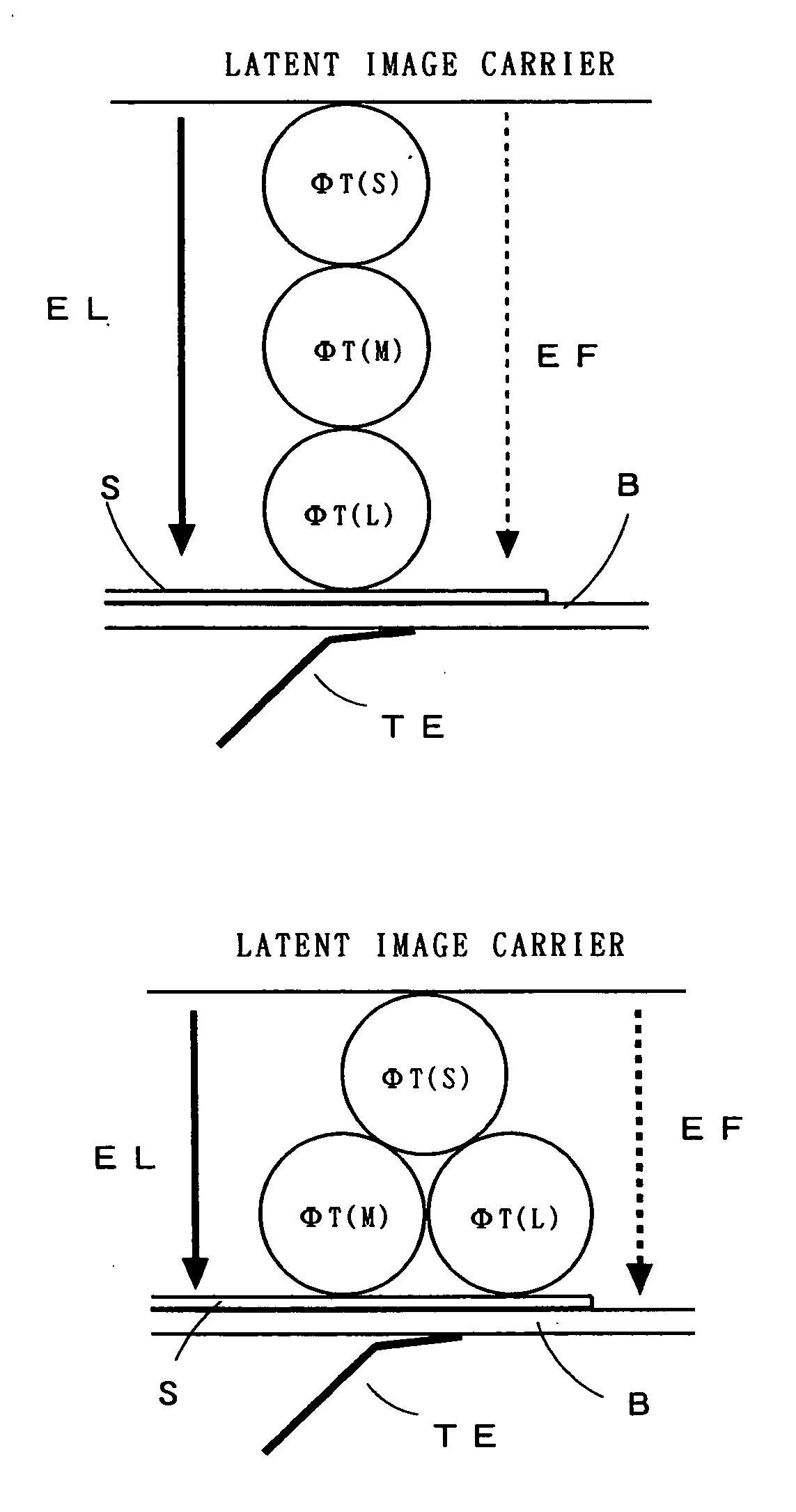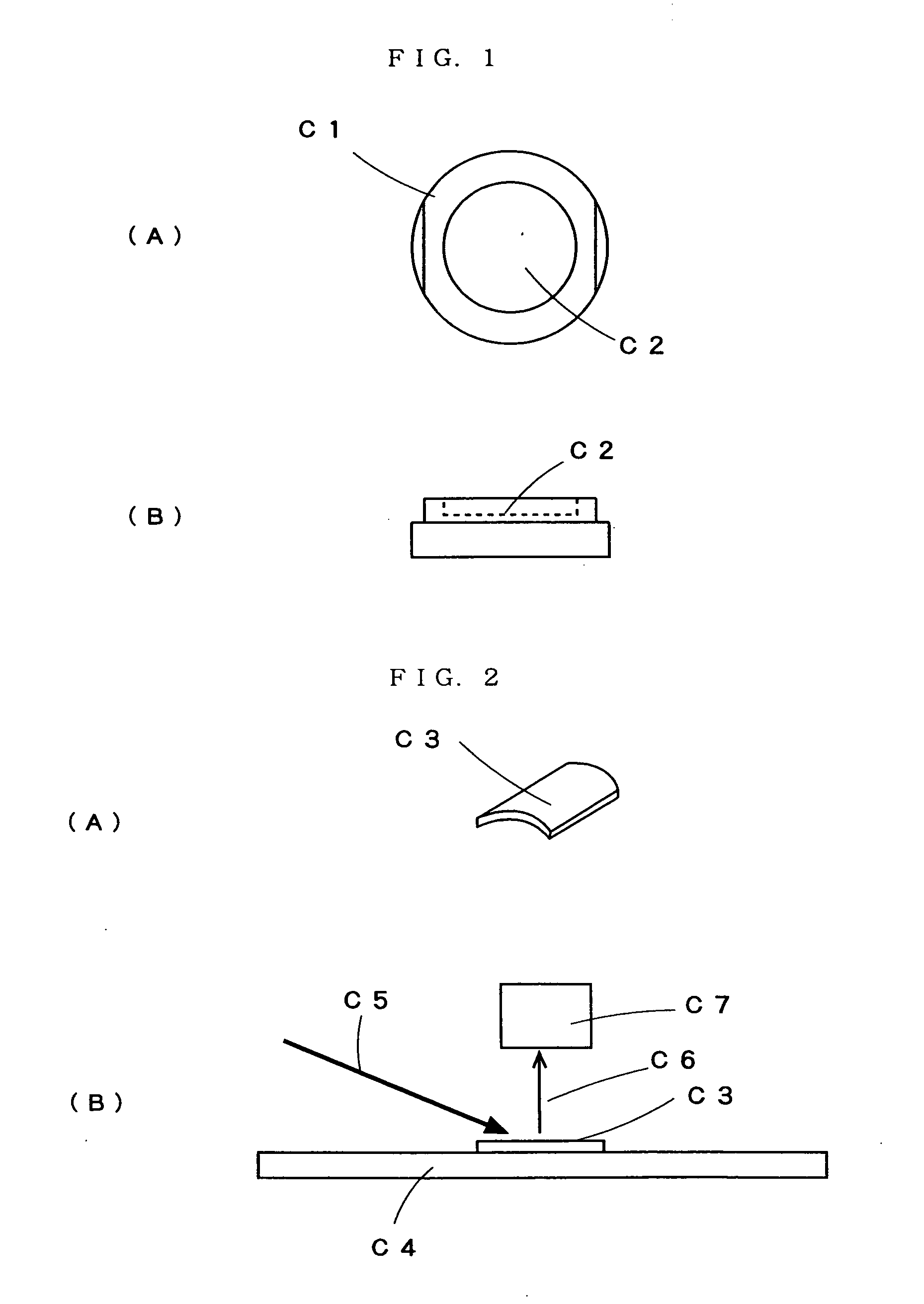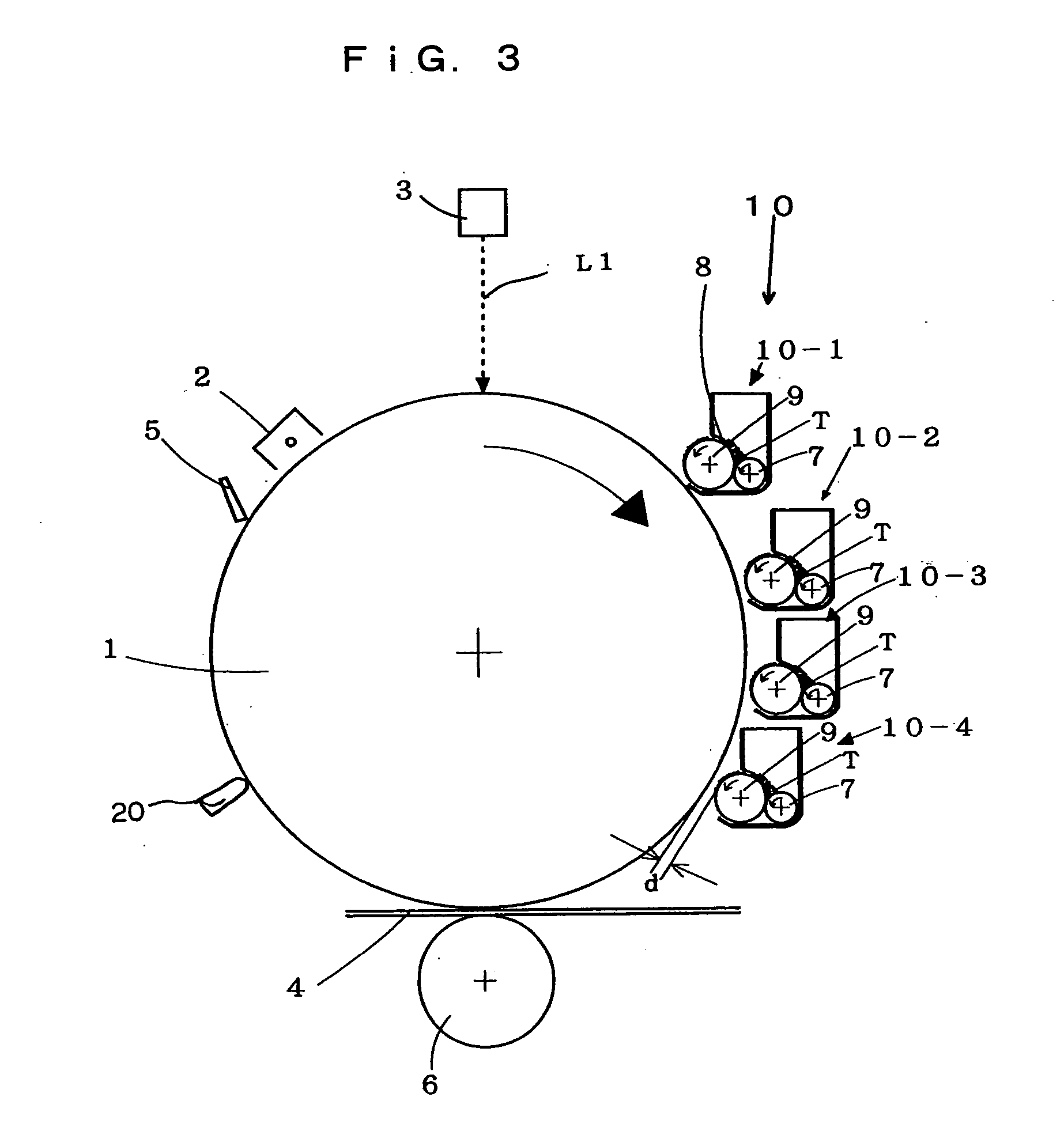Toner, production method thereof, and image forming apparatus using same
- Summary
- Abstract
- Description
- Claims
- Application Information
AI Technical Summary
Benefits of technology
Problems solved by technology
Method used
Image
Examples
example 1-1
[0291] A monomer mixture composed of 80 parts by weight of styrene monomer, 20 parts by weight of butyl acrylate, and 5 parts by weight of acrylic acid was added into a water soluble mixture composed of 105 parts by weight of water, 1 part by weight of nonionic emulsifier (Emulgen 950 available from Dai-ichi Kogyo Seiyaku Co., Ltd.), 1.5 parts by weight of anionic emulsifier (Neogen R available from Dai-ichi Kogyo Seiyaku Co., Ltd.), and 0.55 parts by weight of potassium persulfate and was agitated and polymerized in nitrogen gas atmosphere at a temperature of 70° C. for 8 hours. By cooling after polymerization reaction, milky white resin emulsion having a particle size of 0.25 μm was obtained.
[0292] Then, a mixture composed of 200 parts by weight of resin emulsion obtained above, 20 parts by weight of polyethylene wax emulsion (available from Sanyo Chemical Industries, Ltd.), and 7 parts by weight of Phthalocyanine Blue was dispersed into 0.2 liters of water containing dodecyl ben...
example 1-2
[0314] 100 parts by weight of a mixture (available from Sanyo Chemical Industries, Ltd.) which was 50:50 (by weight) of polycondensate polyester, composed of aromatic di-carboxylic acid and bisphenol A of alkylene ether, and partially crosslinked compound of the polycondensate polyester by polyvalent metal, 5 parts by weight of Phthalocyanine Blue, 3 parts by weight of polypropylene as a release agent having a melting point of 152° C. and a weight-mean molecular weight Mw of 4000, and 4 parts by weight of metal complex compound of salicylic acid (E-81 available from Orient Chemical Industries, Ltd.) as a charge control agent were uniformly mixed by using a Henschel mixer, then kneaded by a twin-shaft extruder at an inner temperature of 150° C., and then cooled.
[0315] The cooled matter was roughly pulverized into pieces of 2 square mm or less and then pulverized into fine particles by a jet mill. The fine particles were classified by a classifier of rotor type, thereby obtaining cla...
example 1-3
[0331] Yellow toner mother particles were obtained in the same manner as the toner mother particles of Example 1-1 except that Pigment Yellow 180 was used as the pigment and that polymerization was conducted in the same manner under the condition that the temperature for improving the association and the film bonding strength of secondary particles was still kept at 90° C. The yellow toner mother particles had a work function of 5.61 eV.
[0332] To the toner mother particles, the fluidity improving agents which were the same as those added in Example 1-2 and metallic soap particles shown in the following Table 8 were added and mixed so as to obtain a toner 14 (Y1) through a toner 16 (Y3) having a mean particle diameter of 7 μm and a degree of circularity of 0.972.
[0333] The work functions of the obtained toners were measured in the same manner as the toner 1. The results were:
[0334] Toner 14(Y1): 5.60 eV;
[0335] Toner 15(Y2): 5.60 eV; and
[0336] Toner 16(Y3): 5.60 eV.
[0337] In the...
PUM
 Login to View More
Login to View More Abstract
Description
Claims
Application Information
 Login to View More
Login to View More - R&D
- Intellectual Property
- Life Sciences
- Materials
- Tech Scout
- Unparalleled Data Quality
- Higher Quality Content
- 60% Fewer Hallucinations
Browse by: Latest US Patents, China's latest patents, Technical Efficacy Thesaurus, Application Domain, Technology Topic, Popular Technical Reports.
© 2025 PatSnap. All rights reserved.Legal|Privacy policy|Modern Slavery Act Transparency Statement|Sitemap|About US| Contact US: help@patsnap.com



